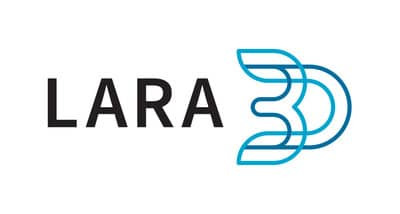The medical 3D printing industry marked an exciting milestone in Canada this week: Health Canada (a government department tasked with national health policies) has approved a 3D printed medical implant made by LARA 3D in Quebec City. The 3D printed device, a patient-specific mandibular plate, is the first made by a Canadian manufacturer to be granted authorization for implantation.
LARA 3D (the 3D anatomical reconstruction laboratory) is based out of Investissement Québec (CRIQ), a provincial research institute that today houses over 800 innovative projects. The 3D printed medical implant was developed and is manufactured at the CRIQ facilities in Quebec City. The implant, officially called the Specifit 3D mandibular plate, is a customizable 3D printed device used for mandibular reconstruction in patients diagnosed with oral cancer.

“We are extremely proud to announce Health Canada’s approval of the Specifit 3D mandibular plate. Not only will it improve patients’ quality of life; but thanks to optimized, guided and personalized surgery it will also enable the development of a 3D medical equipment center of expertise at Centre de recherche du CHU de Québec – Université Laval,” said Dr. Gaston Bernier DMD, Medical Chief, Dental Medicine & Oncology at CHU de Québec-Université Laval. “We are convinced the approval of this technology marks only the start of innovation, research, and development in 3D medical printing at LARA 3D.”
Manufacturing on Demand
The LARA 3D laboratory was launched a year ago and received ISO 13485 certification in April 2021. This certification proves the lab’s capacity to produce new medical devices that meet the demanding standards and quality specifications for healthcare applications. Health Canada officially approved the 3D printed medical implant in September 2021; now, surgeons and medical professionals will begin to use the Specific mandibular plate, along with surgical cutting and drilling guides, to treat patients.
The implantable device is made from biocompatible metals and is printed using laser and electron beam powder bed fusion. Because the implant can be tailored in size and dimensions to fit the patient’s specific anatomy, it reduces operation times and cuts down on patient recovery times.
Looking at the broader picture, the medical device (and its approval by Health Canada) demonstrates the proactive approach Quebec is taking in health tech. LARA 3D’s facilities have not only enabled the development and certification of this implant, they are also enabling many other innovative projects led by public-private cooperations. In the case of this implant, CRIQ worked with researchers from the university hospital CHU de Québec-Université Laval as well as Alkom Digital, an orthopedic screw manufacturer in the private sector, and AP&C, a Quebec-based GE-owned metal powder manufacturer.
* This article is reprinted from 3D Printing Media Network. If you are involved in infringement, please contact us to delete it.
Author: Tess Boissonneault



Leave A Comment